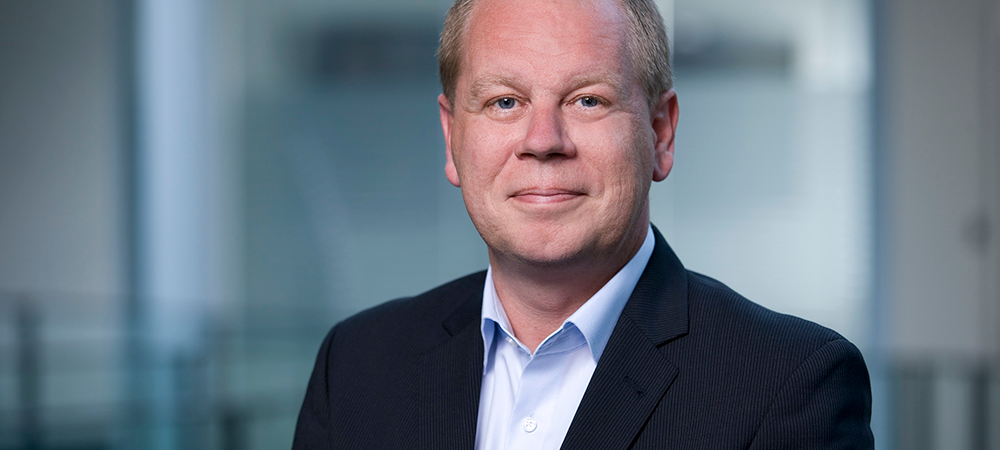Morten Illum, VP of EMEA, Aruba, a Hewlett Packard Enterprise company, stresses the importance of The Edge which is set to transform existing business models – allowing enterprises to create user experiences that are faster and more dynamic. He tells us that Edge computing technologies make it possible for every organisation to provide a radically improved level of service and those that make the necessary changes now will be best placed to achieve market leadership.
In the search for competitive advantage, it is increasingly clear every business should be looking in one place: at the edge of their network, where technology and people meet. Where data and processing power were once concentrated in the back-office, now they live at the Edge, near the people who are using it – as both employees and customers.
This shift has radical consequences for companies in every industry. As a new book Opportunity at the Edge from Fast Future – and in collaboration with Aruba – demonstrates, it has the potential to overhaul business models, transform user experiences and even create entirely new industries that could be worth trillions.
At the Edge, enterprises can deploy technology to create user experiences that are faster, more dynamic and personalised to individual needs. Edge computing technologies – from the mobiles that customers use to connect to service, to the sensors that can track activity, and the Artificial Intelligence (AI) that can analyse the data collected in real time – make it possible for every organisation to provide a radically improved level of service.
This has implications for all industries and sectors of the economy. In a hospital, it could mean that initial diagnoses are made seconds after someone crosses the threshold. In a school it should allow the classroom experience to be tailored to the learning needs and comfort level of every pupil, supporting attainment and wellbeing.
In the workplace it will enable more effective collaboration between people, wherever and whenever they are working. While in sectors such as retail, it will add an entirely new layer to the consumer experience, with the possibility for people to have clothes modelled to them dynamically, seconds after they have snapped them on their smartphone.
The opportunities of the Edge are also intrinsic to the potential of Smart Cities to harness technology in the service of enhanced mobility, improved sustainability and reduced running costs.
Two thirds of the futurists and industry experts surveyed by Fast Future said that they expect at least a third of companies to be achieving ‘mainstream personalisation’ in the next five years.
From retail to hospitality, education and healthcare, the Edge will increasingly allow providers to move beyond a one-size-fits-all approach and provide customised experiences at scale.
This has immense implications for the ability to more effectively serve customers, employees and public service users. Within the next few years, Fast Future’s experts believed that the ability to localise products and services, price dynamically and improve customer satisfaction will be among the core benefits of Edge computing.
That said, the opportunities of the Edge will not be accessed without companies embracing the need for structural and strategic change. The book suggests that enterprises need to get comfortable with new realities, such as autonomous decision-making by edge devices, and an experimental approach to devising new products and services that arise from the data collected.
To provide the faster, more dynamic services that the Edge makes possible, enterprises themselves need to become more fluid, responsive and fast-moving. Both investment and culture must be led from the top, working hand-in-hand with the IT department, which has a central and strategic role to play.
Enterprises need to focus not just on installing technology but upgrading the institutional mindset towards a more experimental approach and improving digital literacy across the board.
Perhaps most significantly, every enterprise that moves towards the Edge must act to pre-empt the security threats inherent to a network newly flooded with connected devices. Fundamental to these opportunities is the need for robust, centrally-managed network infrastructure – one that provides visibility and control in an increasingly complex, and potentially vulnerable, enterprise environment.
Enterprises must also work on the basis of an open technology ecosystem that leaves them with the room to adapt and evolve over time, as priorities change.
We are in no doubt that the Edge represents the single most important trend for enterprises in the years ahead: one that unites the rapid developments in available technology with the equally fast-rising expectations of consumers for more seamless, customised and on-demand services. That is the destination.
Right now, enterprises must face up to the reality and challenges of journeying to the edge. Those that make technical, cultural and structural changes now, will be best placed to attain market leadership in an era of exponential change and growth.
About Aruba, a Hewlett Packard Enterprise company
Aruba, a Hewlett Packard Enterprise company, is a leading provider of secure, intelligent networks that enable customers to thrive and deliver amazing digital experiences in the mobile, IoT, and cloud era.
To learn more, visit Aruba at http://www.arubanetworks.com
Click below to share this article


